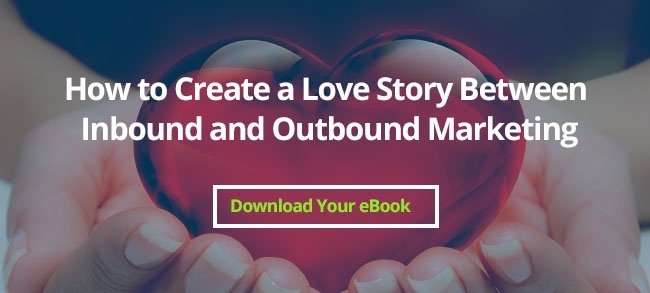How to Get Your B2B Content Marketing Campaign Funded

September 8, 2015

Getting a Budget for B2B Content

Getting a budget for content marketing isn't easy. A big reason for this is that content may not drive immediate results. If your leadership team is forward-looking enough and has the patience to see the investment out, then content marketing can pay long-term dividends.
Why Your Projects Aren't Getting Funded
Marketing professionals know the pain of getting their plans rejected or underfunded. It might even feel like your company doesn't believe in the power of marketing. That they actually hired you is a start. But how can you perform if you aren't given the tools necessary for success?
Your projects aren't getting funded for a few core reasons:
- Lack of trust in marketing
- Lack of verifiable ROI for your marketing efforts
- Sales and marketing are not aligned
- Demands on marketing to show short-term results
- Your marketing efforts do not align with customer needs
We propose bridging this gap in a few ways.
- Making your marketing content customer-centric
- Showing marketing ROI through analytics
- Better aligning marketing with sales goals
Customer-centric Content Marketing is Essential
Here is why much of the content marketing built is frequently NOT customer-centric:
- B2B organizations only budget enough for a few pieces of content.
- Because only a few pieces of content are built, there isn't enough content to focus on all of an organization's industry verticals and buyer personas.
- Companies build content to talk about themselves, not their customers' concerns.
- The only content being built is around presumed pain points. Those pain points are generalized across personas and industries.
- The content that is built is focused on selling, not helping.
Much of today's marketing content is built to spread a company message. The content is not customer-centric. Many organizations don't see the value in blogging or content that builds trust, like case studies and testimonials. If the content piece isn't going to lead to a sale, then it has little perceived value.
Here is why your marketing needs to be customer-centric:
- It's your opportunity to start develop a connection with your prospects.
- If you're talking to them like a business and not like a person, you're missing the mark.
- Prospects don't want to read about you. They want to make a connection to themselves and their situation.
Modern marketing has to be built with the following in mind: People don't want to be sold to. You need to make sure your marketing content speaks to the concerns and needs of the individual.
When you do get requests to build content, make sure that you're building it with the customer in mind. The success of these pieces -- especially in attracting an audience of followers and subscribers -- should help make it easier to get your future budgets approved.
When you build customer-centric content, then customers will be more likely to engage with your brand. If they trust your brand, they'll be more likely to listen to your sales messages.
Buyer Personas Drive Customer-centric Marketing
Understanding your buyer personas is key to building customer-centric marketing. Your most successful content will be created with specific people in mind. How do you do this? Make sure you have a deep understanding of the role those people hold. What is going to stand out to them? What is going to drive opens and clicks?
How can you start to get beyond your solutions and services -- and the pain points that they address -- and start building content that speaks to and grips the individual? When you start to build content that hits at the intersection of the personal and the professional, you start to see more engagement from your B2B audience.
Customer-centricity helps develop trust and customer advocates. While your marketing budget may not be expanded overnight, some early success with customer-centric content should help you expand out your various content initiatives.
ROI for Your B2B Marketing
A big reason your content marketing budgets aren't being approved is that you haven't made the business case. Your leadership team needs to see that they're getting a return on your marketing efforts.
Does your business case show a clear connection between your marketing projects and increased sales? If not, you're going to have a hard time getting the budget for content campaigns. Marketing has to show their value for the organization. Once you start to show that you can create value on a small-scale, then you'll be able to get future budgets approved much more easily.
How Do You Show Content Marketing ROI?
You have to become a master of your marketing metrics to show the ROI on marketing. Content marketing makes this easier than many forms of marketing because many digital marketing results are quantifiable.
There are countless advanced tools that help track and attribute every online action and show the digital costs of every conversion and sale. Many enterprise organizations rely on these kinds of tools to make marketing budget decisions.
You don't need a deeply sophisticated tool to help show results though. Free tools like Google Analytics combined with Google URL builder can help you track and give attribution to site visits and conversions. You can get insight into where the visitor came from and show what actions they performed when they came to your website.
For example, if you can show your CEO and leadership team that a specific piece of content that was distributed out onto a social media channel and resulted in leads and wins, then getting a budget for future activity should be a slam-dunk. This is achievable with a basic understanding of Google Analytics.
Combining the Power of Marketing and Sales
When sales and marketing are aligned, your marketing ROI becomes even clearer. Companies that use inbound and outbound marketing in conjunction can improve lead generation and shorten sales cycles.
Alignment between sales and marketing yields better customer retention rates and higher sales-close rates. You start to attain alignment by making sure that sales and marketing have a shared definition of a lead and understand the appropriate path for leads.
There is much less incongruity between sales and marketing when the two are in agreement about which kinds of leads should be passed over to sales and when. Content is much more valuable to a sales team when it aligns with their efforts. If sales recognizes that great content can support their sales efforts, then the sales department will be a greater advocate for content marketing.
When content helps to drive leads and support lead nurturing and progression, then your CEO and your leadership team will notice. When sales starts to converting more marketing leads to wins, they'll be coming to you directly to ask for more content marketing.
Making the Case for Content Marketing
The above being said, don't get discouraged if you're not getting your ideal content marketing budget. Make the most of what you receive by aligning with the sales department, building customer-centric content, and putting in a proper success measurement system. A connected CRM or a marketing automation tools can help ease the process. But even without sales and marketing technology in place, you should be able to put together easily measurable campaigns.
Are you having trouble making the case for content marketing to your leadership team? Have you taken steps to combine the powers of inbound and outbound marketing?
Don't wait for the budget to come to you. Get a copy of our eBook today and start building a marketing plan that drives results.
